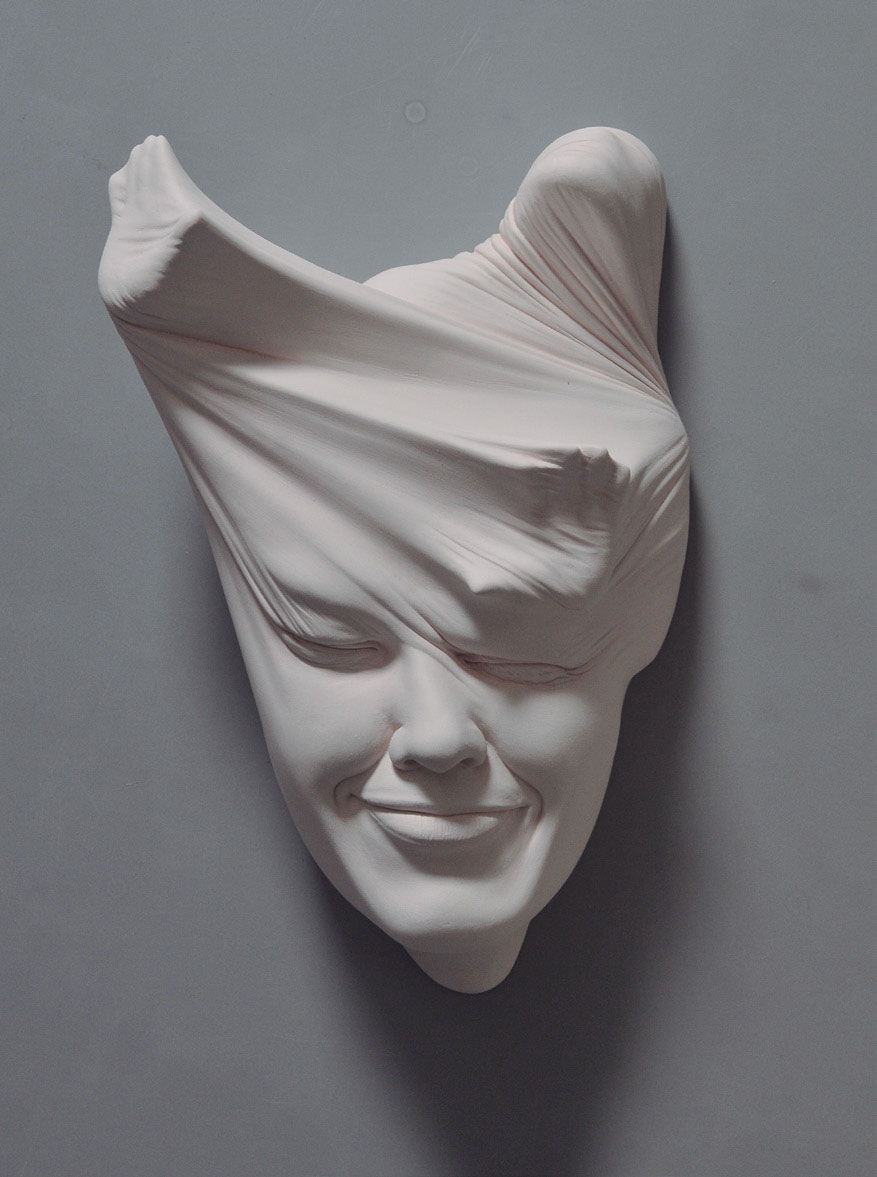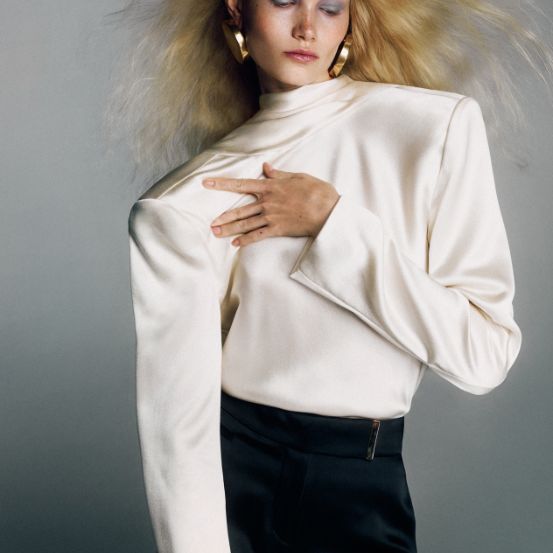Johnson Tsang's soul holds all the emotions of the world. And in your sculptures too.
Johnson Tsang's soul holds all the emotions of the world. And in your sculptures too.

“When I started patrol, after training, I started to make portraits of my colleagues, during lunch or after work. Over time, more and more colleagues came to me asking to make portraits for them. And I did it for free. I did hundreds of them during my 13-year police career. This was a very good training for me to develop my skills in making facial expressions. When I was young I didn't think I was an artist, and I never thought I was one. I just couldn't stop doing creative things with passion. But I always saw it as a hobby. He saw no conflict between the two. Other police colleagues had their own hobbies. However, things were different because my passion for the arts grew quickly, it never disappeared. Johnson Tsang is 60 years old, lives in Hong Kong, where he was born, and is a sculptor. It is no exaggeration to say that his pieces are his calling card - either because they are highly expressive or because he, a humble man who took on his artistic streak later than desired, prefers to communicate through his work. “I was never very talkative, nor am I known for being good at expressing myself, but my works speak the honest words of my heart.” Vogue interviewed him, via email, to try to understand how the intricacies of his mind work.
What is your background? I ask this question because I know you were a policeman before you dedicated to art full time. When and how did you start working with sculpture? I was born in Hong Kong. Since I was four years old, I love drawing. When I finished high school, I had bad grades in the final exam. I was unable to continue to college or enter any institute to study the arts. I knew that I had to find a job to earn a living and help my family financially. I said to myself, "Maybe I can get a job related to design or the arts." But things did not go as I wanted. I had a series of jobs, but none of them made me feel closer to my path. My future was very uncertain. At one point my mother asked me, "Why don't you join the police?" At least it was a stable and well-paid job. I was 21 when I joined the force. It was an important step, which changed the way I see people and society. At that time, I thought it would be my career forever. But there was a voice inside me that told me that I still had a chance to continue my life with more joy. It was then that, on a summer night in 1991, I touched ceramic clay for the first time. It was familiar and intimate, like touching someone's soft skin. I clearly felt the energy contained in the clay and how each of my movements affected it. It was as if I already knew how to wrap it, knowing that the clay was waiting for me to give it life. My first job was a glass with human facial features. I was satisfied and excited when I had it in my hands, feeling the wonders of the simple material and how it had fulfilled my imagination in three-dimensional shapes. Clay has become my best friend since that day. Two years after learning pottery, I resigned from the police force. A new page in my life has started.
How is your creative process? Do you start with an image in your mind and start from there, or do you find inspiration in other places? I believe that all thoughts already exist before I come into contact with them. Ideas come when my mind is restless. I don't need to find them. In general, there are few things that lead me to this state of mind. When I am focused on my creations, I am meditating, and the most interesting state of that process is when I am dreaming. I've had so many strange dreams. I used to dream of a workshop often. It was a huge space with brilliant white light. I felt comfort, peace and joy. There were few windows, but outside there was light. I was floating in the air and could move freely, and I felt an unlimited number of inspirations, ideas and thoughts. And then a living creature appeared in front of me, that continually changed its shapes and colors. And as that happened, my thoughts also changed. I feel like I've become a real magician, and I like that. Some pieces in my Lucid Dream series were made after those dreams. At other times, specific images appear while I sleep. Starvation is Over and Lucid Dream II - Here and There were done in a few days, also after dreams. In a way, I feel that I am not the real creator of my pieces. I feel that I am receiving inspiration, and information, from a divine source. I don't need to know how they were conceived or the meaning behind them. I trust that there is a message of goodwill. This is enough for me to use my unique ability to make them a reality and finally show them to the world.
In your opinion, did your work as a policeman have any influence on the content of your work? I am thinking, for instance, of Security Summit. After leaving the police, I wanted to find my way, even if it was uncomfortable. I thought I lost 13 years of my life that I could have been doing art. However, when I look back, I see that what I did as a policeman played an important role in what I really am. I saw many bloody scenes that are unforgettable. I saw the uncertainty of life. However, I am not afraid of death, but I worry about life. So I started to worry about the meaning of life. I learned to treat people around me well, because I may not be able to see them tomorrow. I appreciate every conversation, because it can be our last words. I took every part of my job very seriously, because this could be my last job.
You have worked with ceramics, stainless steel and wood. Which medium do you prefer? I started in the art world, as a career, 29 years ago. To explore this territory, I tried different types of materials, such as wood, bronze and steel. I was lucky to create some public works of art. However, space is extremely expensive in Hong Kong. It is very difficult to work with these materials. I felt a little lost. I ended up wondering what I really liked. And my interior brought me back to the moment when I first touched clay. I found that, regardless of my mood, I am always calm when I am in contact with clay. The process creates a state of complete mental absorption, as it abstracts my sadness and balances my emotions. Gradually, I came to believe that clay has life, a good and beautiful life. I also believe that, by touching it, it shapes the real me.
Your pieces have very powerful names. How do you decide on these names? It is similar to how ideas come to me. I do not find them, I believe they reach me. The only condition is to have a restless mind. For me, the title of my pieces is just a statement or a distinct record [of everything else]. I want the public to interpret my work in their own way. This brings many more possibilities to my work. I prefer not to explain my work in words. At some point, it is easy to understand without any explanation. Because everyone believes that what they know is the right answer for them. And this is very true.
What is the message you want to convey with your work? I want to make a better world. In a way, I couldn't find a better way to do it, as I am not good in any other area. Fortunately, I found the arts. I discovered that there is something in the depths of my soul that can answer all questions and solve all the problems that are happening now. I believe that love is the answer to your question. Honestly, I believe that it is human nature to love and be loved. Recently, I was fortunate enough to examine images from my previous creations, when preparing for a conversation about my work, and found that I created things related to the theme “love” after making pieces related to the problems of planet. It seemed that I was responding with love to the questions raised by my work.
Your style is quite unique and, often, your pieces express emotions that we can all identify: sadness, suffering, boredom ... Is there any meaning in the use of such detailed facial expressions? I love to use facial expressions, of man, woman, babies or children. Personally, I really like the process. In my opinion, facial expressions speak honestly, especially those of babies. It is a perfect way to highlight the image I have in my mind. Although I have already tried to make precise facial expressions, this does not mean that there is only one model answer for each piece. What I am trying to say is that all interpretations are the right answer. What it means to me can mean something else to someone else. In a way, we are an individual soul who has a unique way of life. When a piece is completed, it manifests itself to the world and remains open to find its unlimited meanings.
This issue is about madness. What do you consider to be a good definition of madness, and how do you approach it in your daily life? For me, madness is a neutral word. There is no right or wrong. In fact, it should be encouraged. I can explain this with one of my works, Out of Mind. It’s a dancer who tries to escape her own mind. It takes a lot of courage to pursue your dreams. For a person, it can be a crazy act not to follow the path of the majority and risk facing failure. People tend to listen to what they have learned, keeping themselves safe in their comfort zone, afraid of making mistakes and losing what they have gained. That is why they choose to abandon their passions and dreams. For me, this is the craziest behavior and the most pitiful waste in life. Life is a process of creation. We are evolving every moment and growing with each change. There are no mistakes, only lessons. By the end of our lives, we will be aware that life is a journey to discover who we really are. And what are the most valuable elements within our soul, everything in the outside world is useless.
This article was originally published in Vogue Portugal's The Madness Issue.
Most popular


Relacionados
.jpg)

Réveillon no Hotel Tivoli Avenida Liberdade: 1 hotel, 3 experiências para celebrar a passagem de ano
22 Dec 2025
.jpg)



